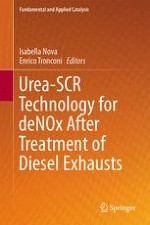2014 | OriginalPaper | Chapter
16. Ammonia Storage and Release in SCR Systems for Mobile Applications
Authors : Daniel Peitz, Andreas Bernhard, Oliver Kröcher
Published in: Urea-SCR Technology for deNOx After Treatment of Diesel Exhausts
Publisher: Springer New York
Activate our intelligent search to find suitable subject content or patents.
Select sections of text to find matching patents with Artificial Intelligence. powered by
Select sections of text to find additional relevant content using AI-assisted search. powered by
